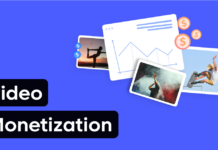Facebook Inc (NASDAQ:FB) successfully connected 1.2 billion people through its platform around the world, and the social network giant focused on achieving its next objective—to connect another 5 billion people. Majority of the people not yet connected or with poor access to the internet are located in the emerging markets.
Two years ago, the social network giant transformed into a mobile first company and trained hundreds of employees on mobile development, restructured internal teams to build for all platforms, and moved to a fast-paced release cycle. All these initiatives are part of its goal to connect the next 5 billion people.
According to Facebook Inc (NYSE:FB), its missions is extend far beyond building and delivering the best experience on high-end smartphones and LTE networks. The social network giant wants to do the same for every person regardless of region, network condition or mobile device.
Facebook product managers, engineers test Android devices in Africa
Facebook Inc (NASDAQ:FB) sent a team of product managers and engineers to Africa to examine mobile app performance in developing countries. To accomplish the objective, the team purchased devices powered by Android operating system to test the latest version of the Facebook app.
The social network giant’s team experienced difficulty in the testing process due to a combination of intermittent, low-bandwidth network connection and a lack of memory spaces on the devices, which resulted in slow load times and constant crashes. The team even used up their monthly data plans in just 40 minutes.
Major improvements
The team of product managers and engineers were determined to improve the Facebook App experience on Android for users in developing countries when they returned to their respective offices in Seattle, London and Menlo Park.
According to Facebook Inc (NASDAQ:FB), the team were able to make major improvements in terms of performance, data efficiency, networking and application size.
The team managed to reduce the start times for the Facebook app on Android by 50% in six months after their trip to Africa by identifying, understanding and removing the bottleneck in the startup path.
In terms of data, the team noted that it is extremely expensive in merging countries and purchasing more data is painstaking process. They realized the need for a concerted effort to reduce data consumption within the Facebook app. They examined the use of alternative compression formats for image transmission and built tools to evaluate its impact and eventually settled on WebP, which offered great compression performance and efficient support from Android.
Using WebP to transmit Facebook images reduced data usage by 25% to 35% compared with JPG and 80% compared with PNG. The team also changed the loading process of images at a resolution based on the ability of the Android devices. They also examined the process used for cache and reuse images. As a result, data efficiency resulted in a 50% reduction is data use.
Facebook Inc (NASDAQ:FB) also improved networking by fine-tuning its pre-fetching algorithms and changed the process of lining up images for download. The team ensured that images expected to be downloaded nest are prioritized in the queue and no images are stacked for too long in the line. The social network giant said reports of slow or failed images loads declined by nearly 90%.
The social network giant’s team in London focused their effort in improving the Facebook app size efficiency. They achieved it by utilizing the ability of Google Play to upload multiple APKs for different Androids OSes and screen resolutions. Facebook Inc (NASDAQ:FB) also utilizes tools to compute how every feature contribute to app size and analyze device size regressions. The team managed to reduce app size by 65%.








